Sinharaja Rain Forest, Sri Lanka

Getting there
This place, a predominantly primary tropical rain forest, designated a UNESCO World Heritage Site in 1988, came with a recommendation from serious birders which meant it eclipsed the other reserves, Yalle and Udawellewe, where big mammals could be seen easily, with the naked eye, no binoculars or super ocular skill required. Visiting Sinharaja Forest raised eyebrows from those we met on the tourist route, ‘be ready for leeches’ they said. They were not wrong!
We arrived at the small village of Waddagala, Kalawana in the early afternoon by air conditioned Toyota hybrid car from Ella, a journey that took us on a tour of petrol stations amongst much more. There are big fuel shortages here in Sri Lanka. Our driver pitched us out of his relatively smart car saying he would go no further. The road ahead looked reasonable to me but he was adamant, this was the end of the road for him. We paid and agreed to write him a review on Trip Advisor despite his taking constant phone calls on numerous phones en route. ‘It’s really no problem here he laughed, I can pay the police and keep my licence’.
We waited an hour or so, Andy busied himself birding and I wondered up the road, squatted down, bared my bum and peed for England. Eventually we were picked up in a battered old Landrover. It must have been at least 50 years old. The driver was a young man, Anoushka, grandson of Martin, the famous bird enthusiast and conservation guru. Anoushka’s wife and their young son occupied the front and we perched with our packs in the back. Soon it became apparent that this was going to be a painful drive, bumping and crashing and sweeping past thick vegetation. The switch backs were too tight, so each bend required a three point turn, large boulders had to be negotiated and at times quite sheer drops, of the kind where you close your eyes and wait for safer ground. I don’t know why I worried myself in our truck in Chile. This was many times worse! Occasionally Anoushka would answer his phone, other times he would stick his head out of the window and point out a bird, invariably flown before we had time to get eyes on it.



It had taken 4.5 hours to drive from Ella to Waddagala, a distance of 152km. The final 2.7km took us best part of an hour. It would have been faster and more comfortable to walk! We arrived and were greeted by Martin’s 4 daughters and his wife. And now we came face to face with the great man himself, in a photograph. He looked a cross between Nelson Mandela and David Attenborough. Sadly, he died in 2021, aged 82, of a stroke. This man had won all kinds of National and international awards which were displayed around the simple room. He is celebrated for establishing forest, bird and education programmes, training generations of guides and forest specialists.

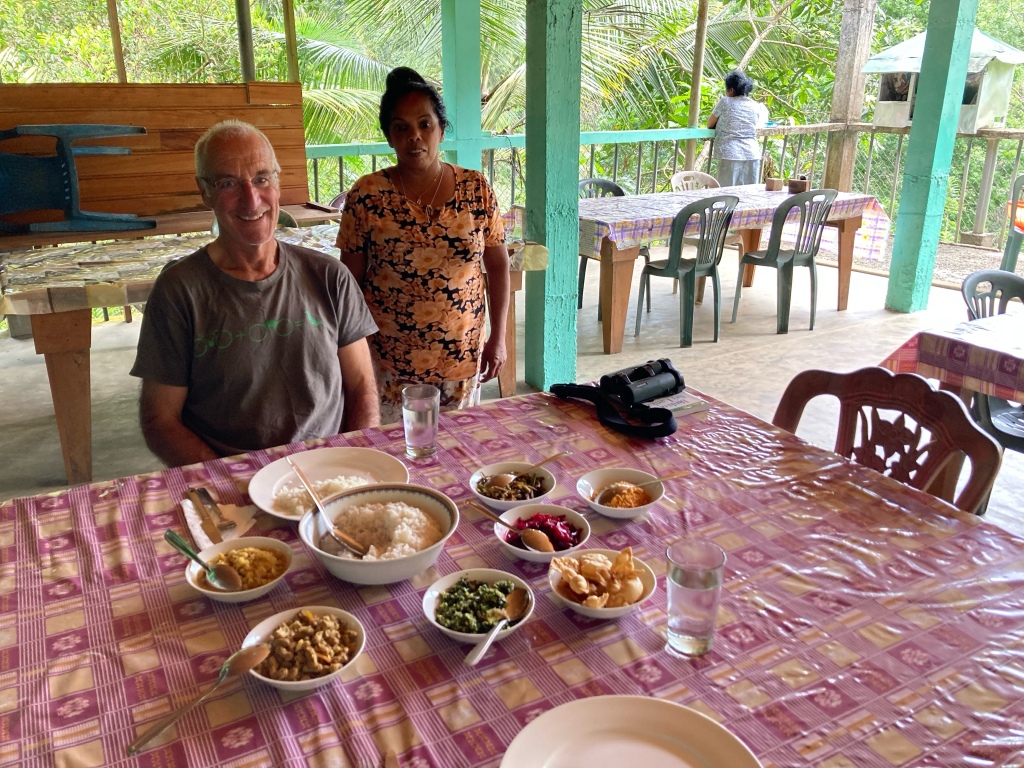
prepared and delivered meals.

Later that evening, I noticed a leech on the floor of our bathroom. ‘What should I do with it’ I asked Andy. He came in to inspect the little thing and picked it up with some loo roll. It squished as he did so, bright red blood oozing out of it onto the paper. MY blood as it transpired, the critter had made a meal of me and I had not even noticed. The lesson? Never pee in a tropical rain forest!
Spot the bird
Birding from the veranda gave us a great introduction to the treasures of the forest and also a sense of how difficult it was going to be. Sinharaja is home to 24 of the 27 endemic birds of Sri Lanka, before arriving we had seen just 4. With only one day to play with, we had no time to lose.

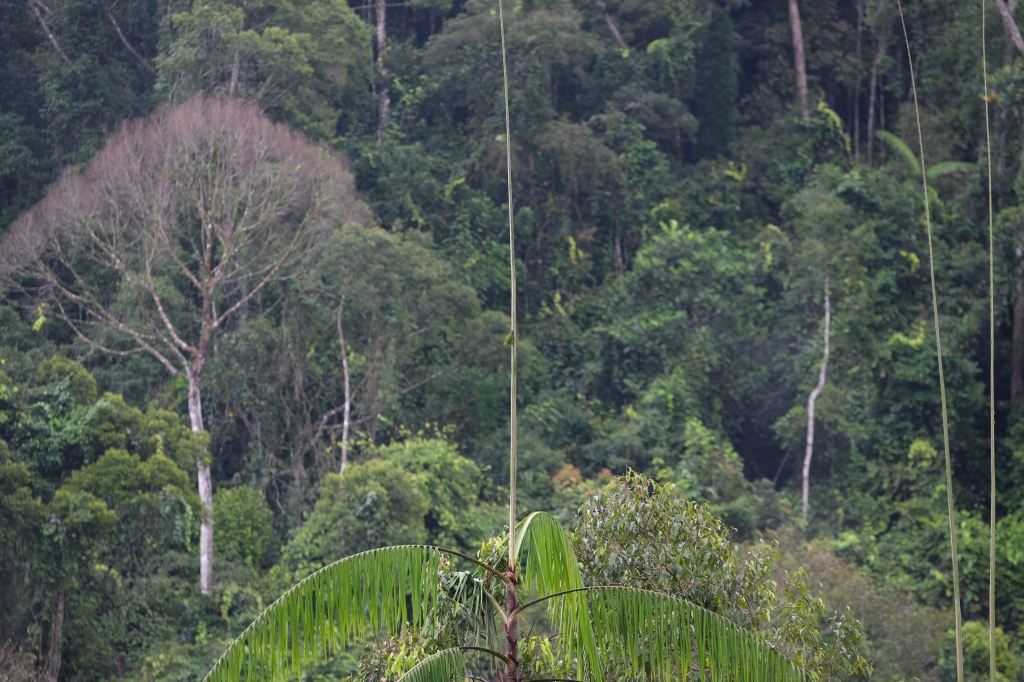
Martin’s family feed the birds from the veranda making sightings of other birds much easier. Sri Lankan Blue Magpie, Sri Lankan Grey Hornbill (both endems), Black Bulbul and Yellow Browed Bulbul all appeared to enjoy banana and cooked red rice.




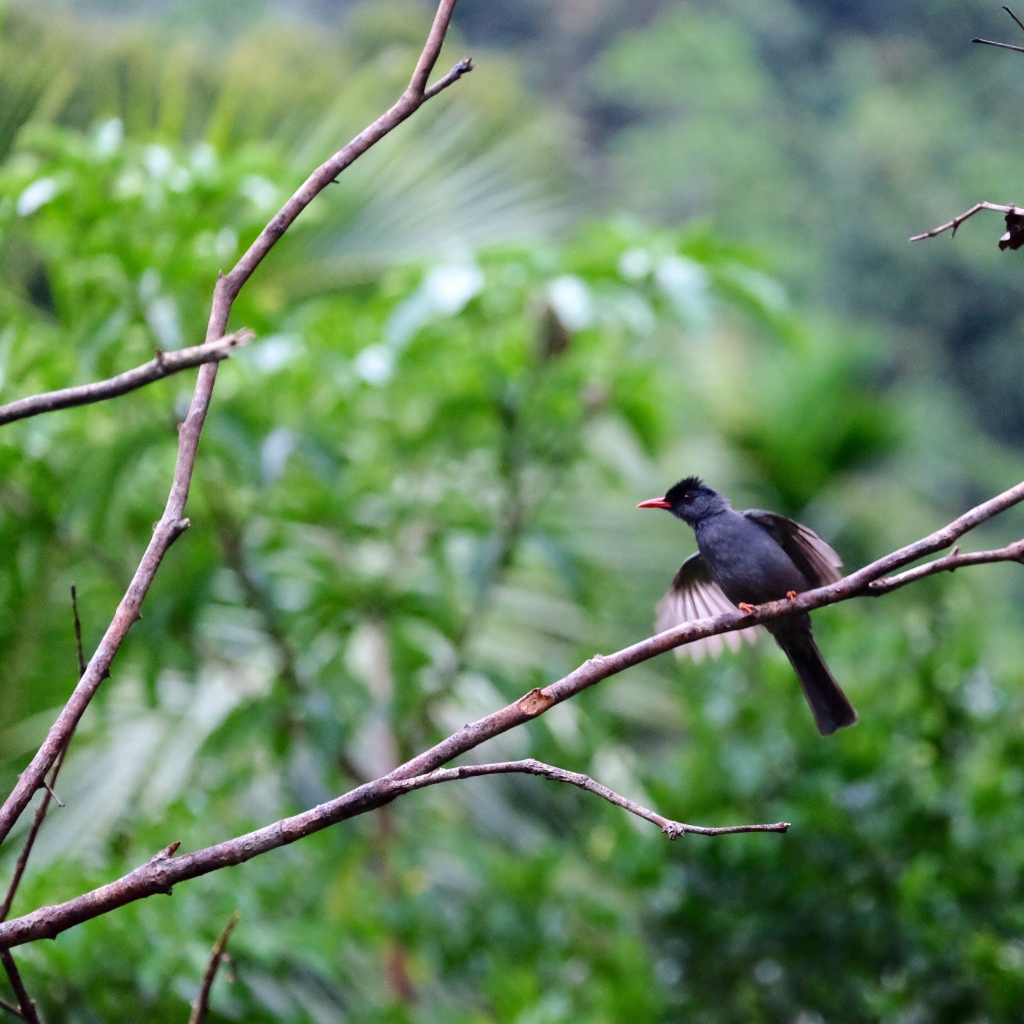

On the other hand Sri Lankan Spur Fowl, a severely endangered endemic, won’t come to the veranda, but can be persuaded into the open a little further away especially if uncooked red rice grain is on the menu!

Before heading into the national park we were given a pair of leech socks. These look like Christmas stockings except you put them on over your socks before pulling on your walking boots. The idea is that leeches cannot get under your trouser leg and crawl up your body to find the most juicy and tender places to feast on. I’m not sure they’ll ever hit the cat walk, but for sure they are essential kit in the rain forest, especially during and after rain, which of course is most of the time. You have to remember it is hot and humid in this part of the world, so being buttoned to the neck, hatted, double socked and trouser legged, meant you dripped with sweat. It was a very thirsty endeavour.
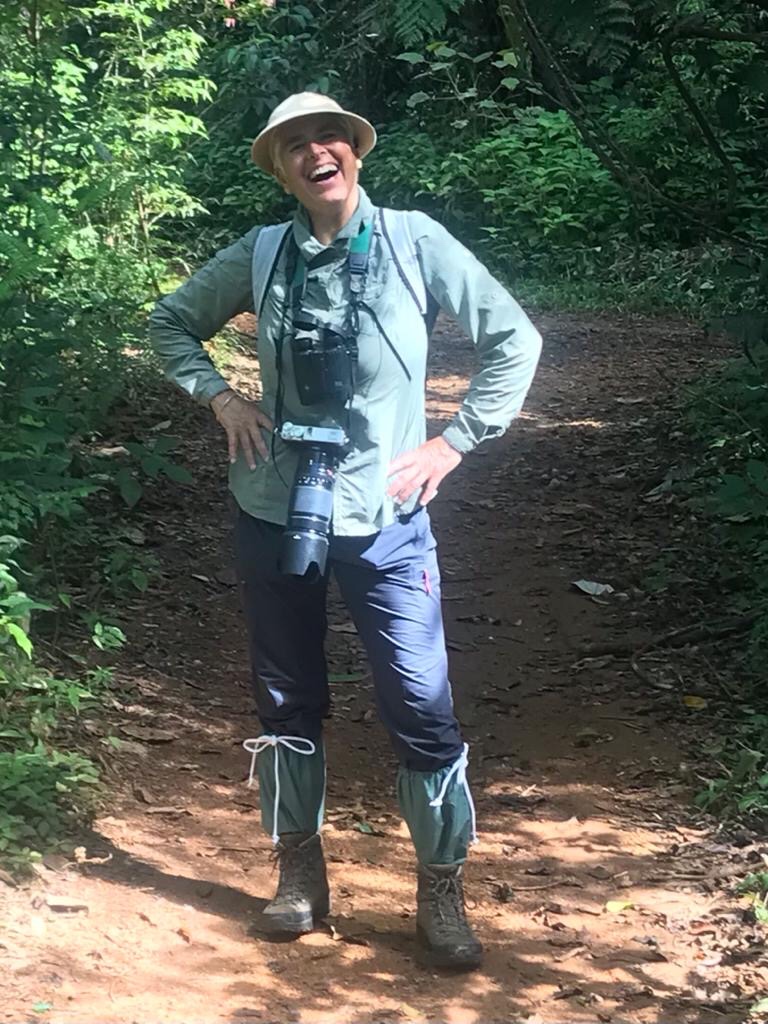
Sinharaja is the country’s last viable area of primary tropical rain forest. More than 60% of the trees at are endemic. In addition to the birds, the reserve is also home to 50% of Sri Lanka’s endemic mammals and butterfly’s, insects, reptiles and rare amphibians. Through the seriously dense thicket, light occasionally filtering down. Under the canopy it was cooler than in the open. We moved very slowly, listening to the sound of the forest, treading softly, watching our foot steps. I almost trod on a Green Pit Viper, a massive thing, that slithered off into the undergrowth leaving me quivering. We soon learned that birds come screaming through the forest in mixed feeding flocks. The number of flocks you see is the measure of the success of your birding expedition because it takes a number of fly by’s to get good views of all the species in the flock. You have to be ready, quick on the binoculars, they don’t hang around for long. The flocks tend to be led by Drongos and include Orange-billed Babbler, Yellow-fronted Barbet, Dark-fronted Barbet, Blacked-capped Bulbul, Sri Lanka Scimitar Babbler, Malabar Trogon and Red-faced Malkoha. Great names and some great lookers. Note to self: add links to images when I get home.
Unlike the birds, foliage was easier to capture. And as my eyes adjusted to the dappled light, other critters came into focus.


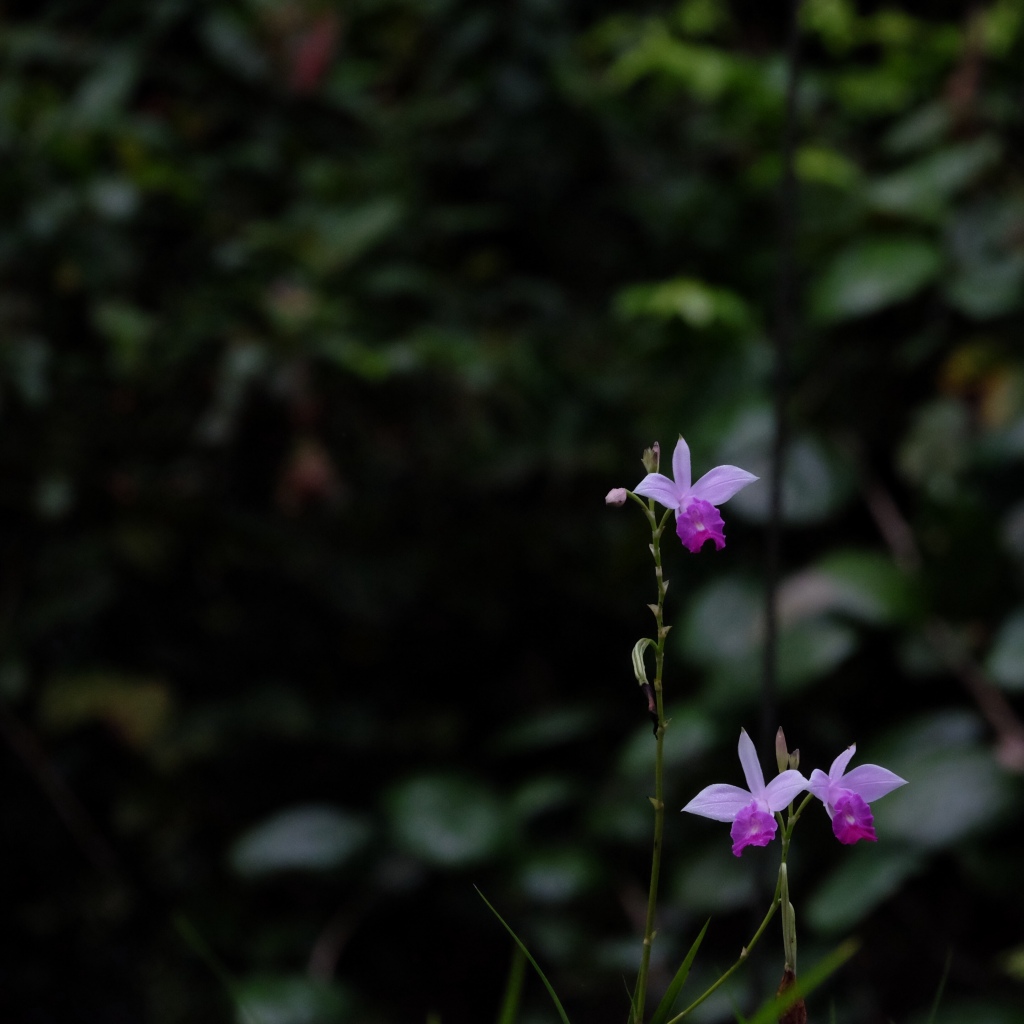



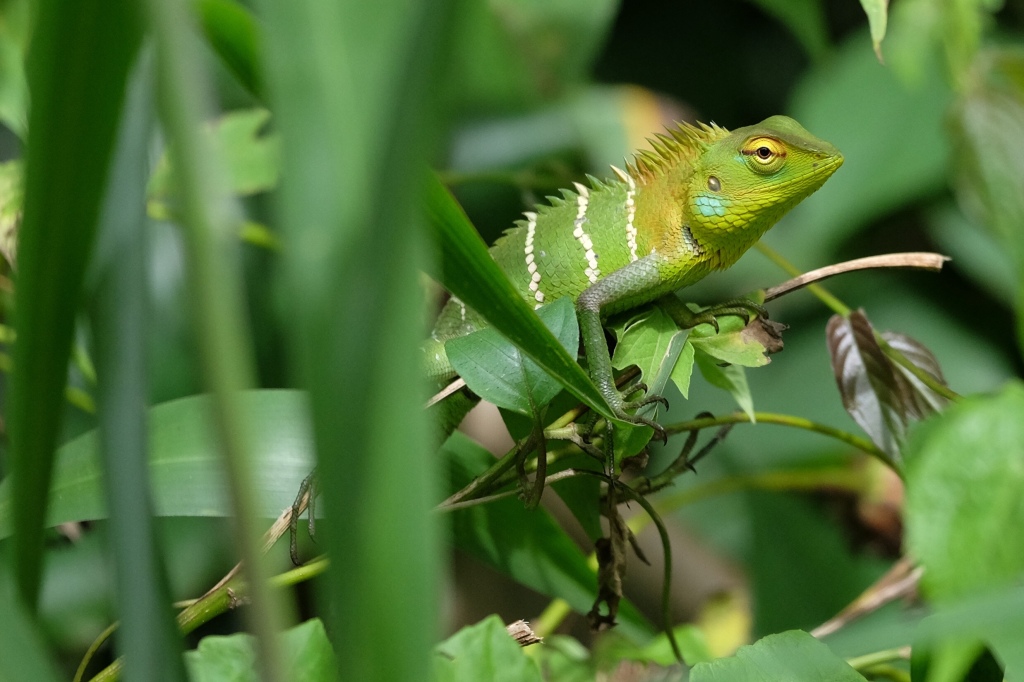

I was wilting so we sat down for a drink and a rest and Wasantha, our fabulous Government funded guide took off to scout. A couple, so obviously from the UK, approached us on their way out of the park. ‘Have you seen anything?’ he asked. ‘Loads’ I replied. ‘Oh’, said she, ‘we must have been on the wrong path then’. More likely looking in wrong direction, I thought! She had a pair of tiny binoculars around her neck. Not good for much in this forest. ‘We are not naturists’, she continued, not realising her malapropism. We wanted to visit a National Park and this was the nearest’. They were on a day trip from Galle, a torturous 150km away! They went on their way, clearly disappointed.
My camera battery died. Just as I was phaffing around trying to find another, a young lad came along the path carrying a tripod and filming kit. Give us a minute, he said with no introduction, I might have a spare you can have. His name is Don Weersirie, half Sri Lankan, brought up in Bedford. In lock down he made a film called Wild Bedfordshire and he was currently gathering footage on snakes, for a new film, Wild Sri Lanka, ‘to give something back’ he said. Having not met any Brits since the train to Ella (a story still to be told), it was quite a coincidence to encounter two sets especially since Sinharaja barely features on the tourist map.
Wasantha returned, a little out of breath. He beckoned us to follow. By now all I wanted was to get home. ‘How far?’ I asked, ‘2-300m’ came the reply, ‘and then we will stop’. What he failed to mention was that this 2-300m was off piste, a dive into the undergrowth, over roots, pushing through branches taking care not to hold on to the barbed ones to steady your step, twisting and weaving, crossing a stream, almost over the boot, dripping with sweat. Eventually Wasantha instructed us to move slowly and quietly down a steep, slithery incline. He pointed. Initially, it was not apparent what he was showing us. But as our breath slowed, it became clear. There in front of us, huddled together were a pair of sleepy Sri Lankan Frogmouths. They look part Owl and part Nightjar. He is Grey and white and she, a deep cinnamon colour. She watched us. He kipped. What a pair! With some difficulty and with Wasantha’s help, I got some passable shots.




Forty hours on and we were on the road again. We joined the Japanese birders their guide Upul and their translator, Sunat, in the ancient jeep to get down to the village. Sunat was on his second only birding tour having been a cultural guide for more than 10 years. We had enjoyed their company. Now we would start the final episode of our journey. In the short time we visited Sinharaja Forest Reserve we clocked 20 out of 27 of Sri Lanka’s endemic birds.
I’ve just watched Don’s film Wild Bedfordshire (https://youtu.be/LCgGRmPbNso). A very nice reminder of the country we are returning to after 4 months of travel, tomorrow, Feb 6 2023.
